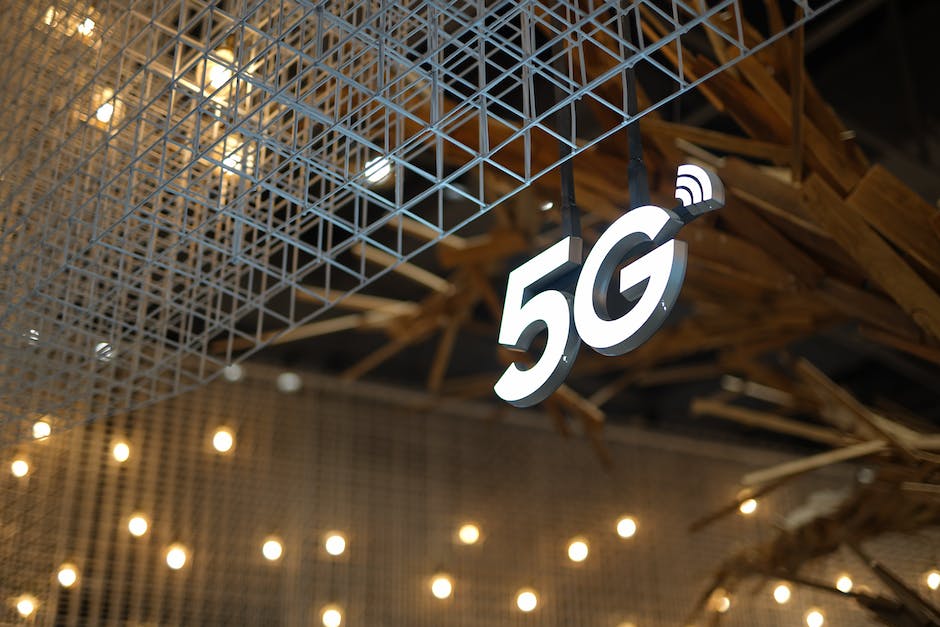Encapsulating the exciting sphere of technological progression is the innovative 5G network technology. Building on the successes of its predecessors, 4G and LTE, 5G decidedly stands out as a revolutionary enabler of superfast, super-efficient, and ubiquitous communications. This essay ushers you through the ins and outs of 5G technology, from its basic structure to its broad-spectrum applications across multiple industries. In the relentless pursuit of progression, it is crucial to stay informed on technological advances like 5G, which have transformative implications for individuals, businesses, and societies at large. Also noteworthy are potential challenges of integrating this technology, along with a forward-looking glimpse into the dynamic future of 5G.
Understanding 5G Technology
5G Technology Fundamentals
5G stands for ‘Fifth Generation’, which denotes the latest phase in the evolution of cellular technology. It is designed to replace and enhance the current 4G network – also known as LTE (Long Term Evolution) – introducing revolutionary changes not only to our individual smartphones but also to the far reaches of the Internet of Things (IoT).
Key characteristics that distinguish 5G from its predecessors include higher peak data speeds, ultra-low latency (the delay before data begins following an instruction for its transfer), more reliable connections, and the ability to connect a significant number of devices to a single network.
Understanding the 5G Network
To truly comprehend the promise of 5G technology, it is crucial to understand its underlying structure and workings. Unlike the predecessors that depended largely on large high-power cell towers to broadcast signals over long distances, 5G primarily relies on a network of small cell sites strategically located in positions like light poles or building roofs. The signals relayed by these cell sites are engineered to stay closer to the ground, thereby providing improved coverage, faster data delivery, and less drain on battery life.
These small cells function by utilizing a technology called Massive MIMO (Multiple Input, Multiple Output). It involves housing numerous small antennas in a single module. This is unlike the 4G networks that depend on large antennas to send and receive data. The application of MIMO technology empowers 5G systems to connect with multiple devices simultaneously and increases data speeds while decreasing congestion.
The Significance of 5G
With the potential to dramatically change existing infrastructures in communication, transportation, healthcare, and more, 5G is indeed a remarkable technological advancement. Offering lightning-fast speeds and highly reliable connections, 5G is set to welcome a new age of technological opportunities. For instance, 5G’s ultra-low-latency can radically transform the self-driving car industry, as immediate communication is essential for safety in autonomous vehicles.
Additionally, 5G technology is a valuable resource in creating a stable IoT ecosystem as it can comfortably support a massive number of connected devices at once without lowering speed or affecting the overall performance of the network. This is vital for applications like smart cities and digital health to work flawlessly.
However, it is crucial to note that while 5G does represent a significant progression from 4G, it’s only one jump on the long evolutionary ladder of cellular technology developments. As ensuing generations appear, network speeds will persistently increase, and connection reliability will continually enhance, thus consistently revolutionizing digital communication standards.

Applications of 5G technology
Applications across Various Industries
The advent of 5G technology, with its assurance of high-speed internet, diminished latency, and massive connectivity, is set to bring a sea-change in multiple sectors, altering everyday life. The assimilation of 5G technology is currently being witnessed across a multitude of arenas including healthcare, transportation, and entertainment, promising diverse advantages with its deployment.
Healthcare Applications of 5G
In the healthcare industry, 5G technology can revolutionize how medical services are rendered. Telemedicine, which facilitates remote patient monitoring, can be strengthened with faster and more reliable connections.
Furthermore, the 5G network can facilitate the remote control of surgical robots. Surgeons, even from a distance, can perform complex procedures with no perceivable latency. This would exponentially increase the reach and scale of medical services, enabling professionals to overcome geographical barriers.
Another promising application is in the area of virtual reality (VR) for therapy. Higher network speeds would result in smoother VR experiences, important during high-precision therapies and physical rehabilitation procedures.
Transportation and 5G Integration
In the transportation sector, the full potential of driverless vehicles is predicted to be realized with 5G technology. The high-speed connectivity and low latency are crucial for the real-time data collection and processing required for autonomous vehicles.
Moreover, smart traffic management systems that connect to detectors, cameras, and traffic lights over a 5G network can optimize traffic flow and help prevent congestion.
Public transportation services could also be enhanced by providing passengers with high-speed internet during travel, enhancing the commuter experience.
5G Transforming Entertainment
5G opens up vast opportunities in the entertainment industry, particularly for streaming services and online gaming platforms. Viewers can enjoy high-definition (HD) and ultra-high-definition (UHD) content without buffering or lagging, courtesy of 5G’s high-speed Internet.
Online gamers stand to benefit from decreased latency, which ensures seamless gaming experiences, supporting multi-player, real-time gaming on mobile devices.
Augmented reality (AR) and virtual reality (VR) experiences, which require high bandwidth and low latency, will also be significantly enhanced with 5G technology. Whether it’s for gaming, live events, or immersive movies, consumers can enjoy a better AR and VR experience with fewer glitches and more realistic interaction.
The advent of 5G technology promises to bring about an unparalleled shift in various industries, fundamentally overhauling delivery of services and the way users interact with these services. The sectors we’ve explored so far are merely the beginning, as 5G technology is continuously evolving, and adapting to cater to specific professional and customer demands.

The benefits of 5G technology
Unprecedented Speed
One of the prominent features of 5G technology is its incredible speed, predicted to supersede existing wireless networks by up to 100 fold. This drastic improvement will make downloading and uploading faster than ever before. For example, a full HD movie download might currently take over 7 minutes on a 4G network, this could be reduced to mere seconds on a 5G network. This boost in speed will provide superior user experiences for activities such as streaming services, online gaming, and augmented reality (AR), or virtual reality (VR) systems.
Lower Latency
Another primary benefit of 5G technology is its low latency, or the delay before data transfer begins following an instruction for its transfer. Presently, 4G networks have a latency of about 50 milliseconds. In comparison, 5G technology aims to reduce this to as little as 1 millisecond. This nearly real-time response would be notably beneficial for time-sensitive applications like autonomous driving, remote surgeries, and AR/VR implementations.
Increased Capacity
5G technology also promises to increase network capacity, accommodating a larger number of connected devices simultaneously. This factor is critical considering the growth of Internet of Things(IoT), where we have an increasing number of devices such as cars, home appliances, monitoring systems, etc., connecting to the internet. With 5G, networks will be capable of handling the surge in data requirements of these devices without slowing down.
Improved Efficiency
Improvements in wireless infrastructure made possible by 5G technology could dramatically increase the efficiency of data services. 5G networks are expected to consume about 90% less energy per service provided than 4G, making them more robust and less costly to maintain. This leap in efficiency will have a positive impact on the cost of services for consumers and for businesses and societies that increasingly depend on the internet for their operations.
Benefits to Individuals, Businesses, and Societies
For individuals, the impacts of 5G technology will be seen in everyday experiences like streaming videos without buffering, improved gaming experiences, and seamless use of AR/VR applications. It will also enable self-driving cars and drone deliveries through low-latency communication.
For businesses, the advantages of 5G technology could translate into increased operational efficiency, be it in remote working, cloud-based service delivery, IoT implementations, or in energy savings.
At the societal level, 5G can be instrumental in enabling smart cities, where everything from traffic lights to utility grids can be connected for optimal function. It can also revolutionize healthcare services through telemedicine and remote surgeries, and significantly transform other sectors like agriculture and education.
The Road Ahead: Opportunities and Hurdles
While the advent of 5G technology is considered a breakthrough in the digital world, it is indeed not without its fair share of challenges. These obstacles range from privacy concerns, security threats, to substantial infrastructural investment requirements. Therefore, our focus must be on exploiting the potential benefits of 5G while also addressing and mitigating the associated risks simultaneously.

Challenges and concerns related to 5G
5G Deployment: An Expensive Feat
The implementation of 5G technology poses one huge challenge – the exorbitant cost. This revolutionary network employs higher frequency bands, aka millimeter waves, capable of carrying large volumes of data but limited by their range. As a result, it calls for the establishment of an extensive network of small cells, which prove costly to install and maintain. Moreover, the existing network infrastructures may require significant upgrades or complete overhauls to accommodate the demands of 5G technology, further magnifying the cost factor.
Security Concerns Associated with 5G
While 5G technology can bring about faster speeds and more connectivity, it also broadens the scope for cyber threats. 5G networks will involve a larger number of devices connected to the internet, presenting more potential entry points for cybercriminals. The heightened interconnectivity can also increase the damage caused by a successful attack, as it can enable the attacker to infiltrate multiple devices or even the whole network. The use of AI and machine learning in 5G could also be exploited by adversaries to carry out sophisticated attacks.
Furthermore, concerns about the supply chain security of 5G equipment have also been raised, as compromising the hardware or software during the manufacturing or installation process can give attackers a backdoor into the network. The lack of a unified security standard for 5G also adds to these concerns.
Health Concerns Over 5G Radiation
Another area of concern regarding 5G pertains to its potential health effects. The use of millimeter waves in 5G has raised worries about increased exposure to electromagnetic fields (EMFs). Some studies suggest that prolonged exposure to EMFs could have adverse health effects, such as changes in cell metabolism, oxidative stress, and even DNA damage. However, more research is needed in this area, as conclusions about the long-term effects of exposure to 5G-associated EMFs are yet to be reached.
Infrastructural Challenges for 5G
Along with the high deployment costs, 5G also presents infrastructural challenges. As previously mentioned, 5G operates on millimeter waves that necessitate a dense network of small cell sites. Such a widespread deployment can be logistically difficult, particularly in rural or remote areas.
Moreover, these small cell sites will require an extensive backhaul network, which refers to the links connecting the cell sites to the central network. The backhaul network needs to have a sufficiently high capacity to handle the massive amounts of data transmitted over 5G. This would involve extensive fiber-optic deployments, which can be expensive and time-consuming.
In addition, the 5G network also requires energy-intensive operations, necessitating an efficient and reliable power supply. Managing the increased power requirements of 5G is a major challenge, particularly in areas with unstable power infrastructure.
An Exploration into the Consequences of 5G Implementation
5G is on the brink of reshaping our digital landscape immensely, although its rollout and application carry a range of issues and worries. It is crucial to note that it necessitates substantial expenditures, increases security vulnerabilities, potential health impacts, and requires robust infrastructure. Any of these elements must be thoughtfully considered to successfully navigate the benefits of 5G, without sacrificing safety, health, and fair accessibility.

Photo by frederikli on Unsplash
Looking ahead: The future of 5G
Understanding the Advancement of 5G Networks
The fifth generation of cellular network technology, known as 5G, is set to catalyze groundbreaking shifts in digital advancement. This next-level wireless technology brings substantial enhancements over its predecessors, boasting increased speed, storage, low latency, and connective capabilities. It’s anticipated that 5G will underpin the future networking infrastructure that will enable Internet of Things (IoT), self-driven vehicles, smart cities, and myriad other technology leaps and bounds.
The Potential Advancements of 5G
The potential advancements in 5G technology are boundless. In the future, we can expect to see a wide range of new applications and services made possible by 5G. For example, the surge in data traffic and demand for real-time services like video streaming and gaming will be efficiently handled by 5G’s high-speed connectivity.
In healthcare, remote patient monitoring and telemedicine will be improved by the enhanced connectivity of 5G. Surgeons may conduct remote surgeries using 5G-enabled robotic arms. Similarly, in education, immersive learning experiences using virtual reality (VR) and augmented reality (AR) will become commonplace, thanks to the high-speed, low-latency connectivity offered by 5G.
Additionally, 5G has the potential to revolutionize the automobile industry by facilitating the development of self-driving vehicles. With the help of 5G’s superior network performance, autonomous vehicles can communicate with each other and with traffic management systems in real-time, leading to safer and more efficient transportation.
Increased Global Implementation of 5G
In terms of global implementation, the future of 5G looks promising. Many countries are already deploying 5G networks at a rapid pace, and the trend is set to continue. To date, China has been leading the global implementation of 5G, followed by the United States and South Korea. In the coming years, more and more countries are expected to join the 5G revolution.
According to a forecast by Ericsson, there will be 2.8 billion 5G subscriptions globally by the end of 2025. This suggests that 5G technology will play a central role in the global digital transformation, including in developing countries where affordable internet connectivity is still a challenge.
Projections for 5G
The future of 5G looks bright, but it also presents some challenges. As the demand for 5G grows, so does the need for enhanced cybersecurity measures. The complexity and scale of 5G networks make them an attractive target for cyber attackers. Therefore, securing 5G networks and protecting user data will be a significant challenge in the years to come.
In conclusion, 5G technology is set to transform the way we live, work, and interact with the world. As it continues to evolve and become more widely adopted, it will fuel a new wave of technological innovation, opening up unprecedented opportunities for individuals, businesses, and societies. The future of 5G is indeed something to look forward to.

Photo by ilyapavlov on Unsplash
As we ride the global wave of digital transformation, our perceptions of communication and connectivity continue to be redefined. 5G technology, despite its inherent challenges and concerns, underlines the immense potential for growth and innovation by reshaping multiple aspects of our lives. Its benefits extend far beyond speed and efficiency, instilling a new layer of possibilities from healthcare to entertainment. With an ever-evolving technological landscape, 5G is expected to be at the forefront of creating smarter, more interconnected societies, thus revolutionizing the future of global communications. Keeping abreast of such technological breakthroughs enables us to better understand and navigate our rapidly changing world.

